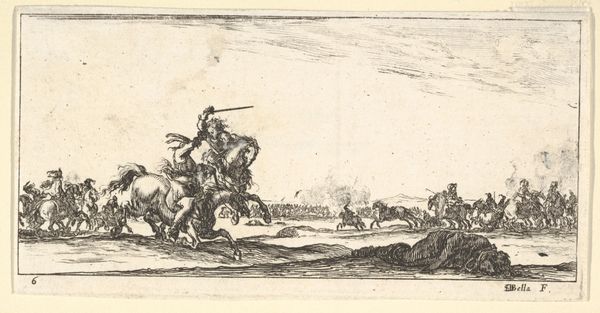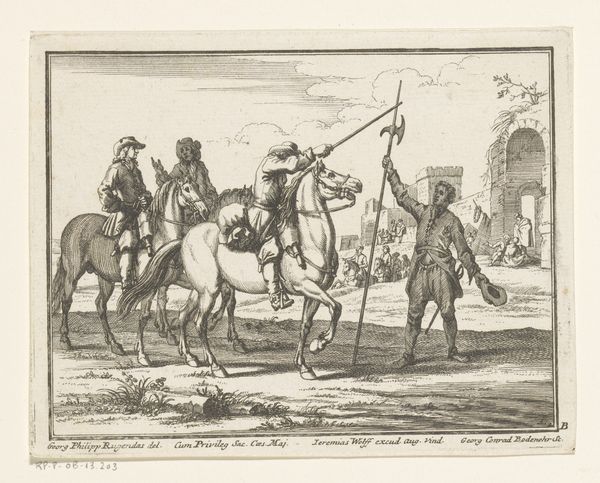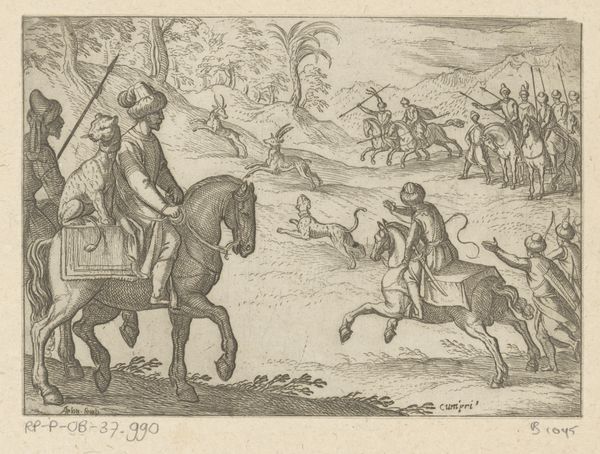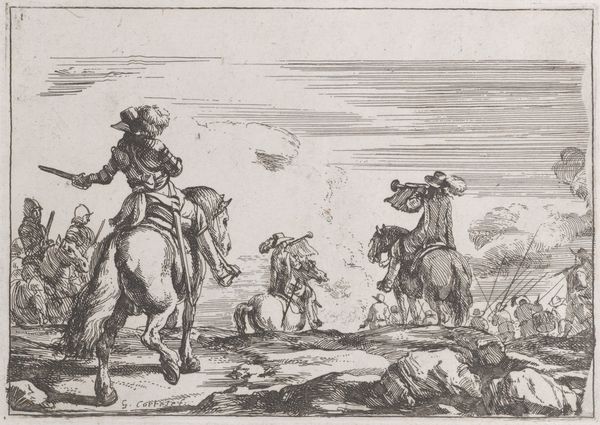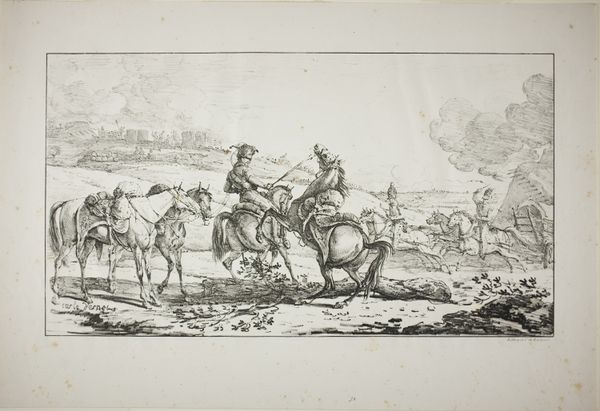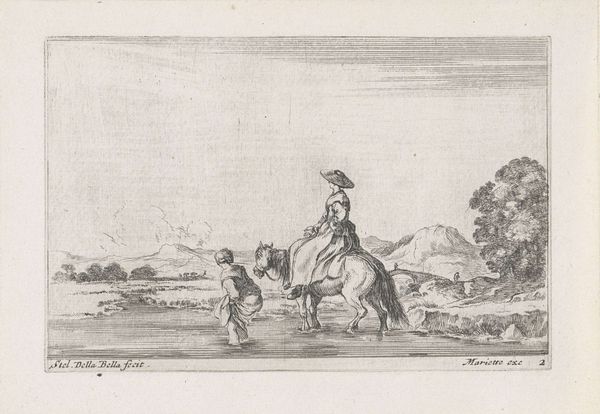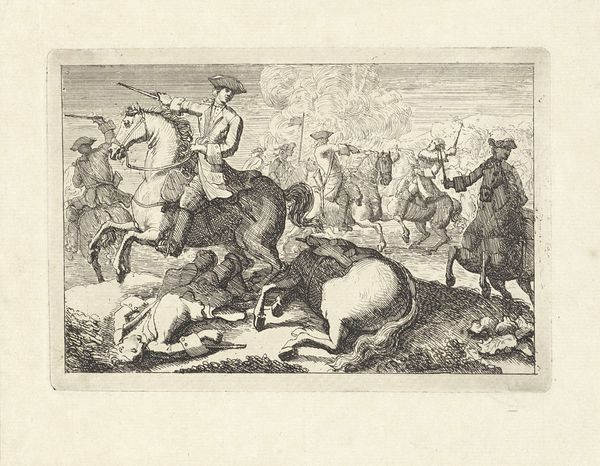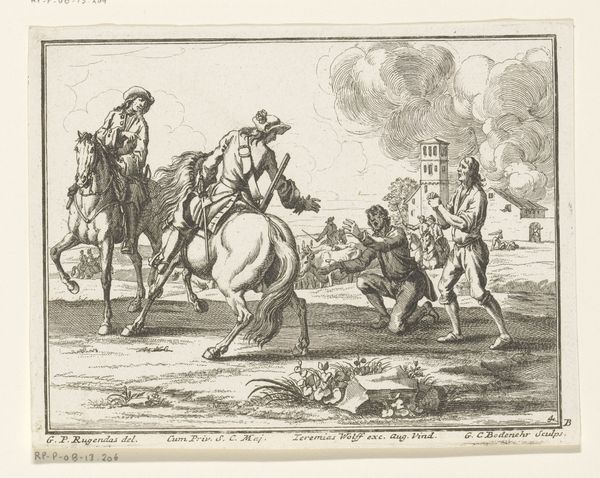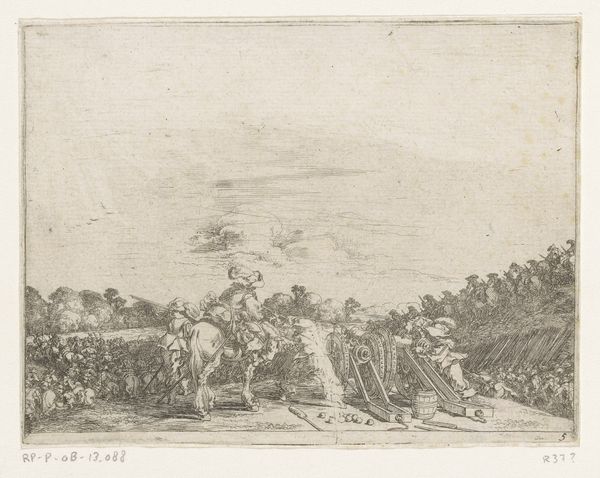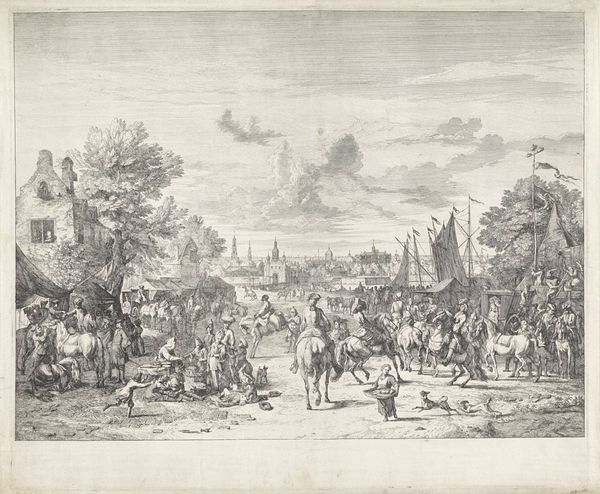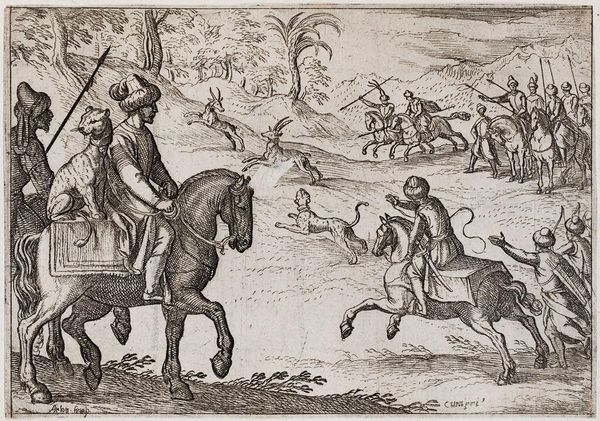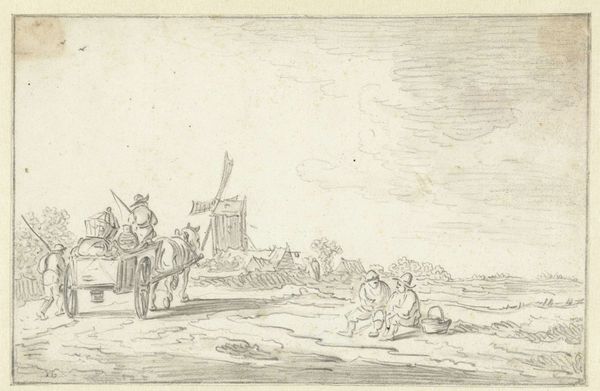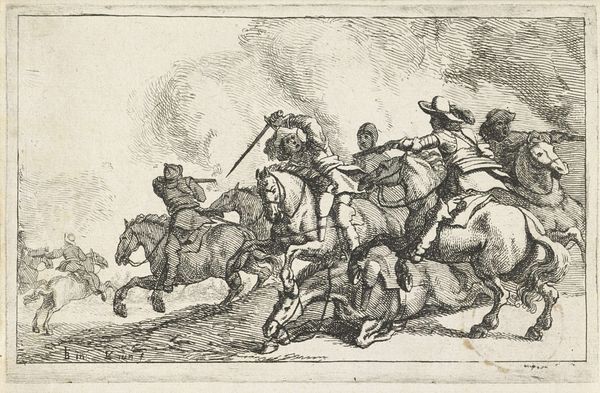
print, etching
#
baroque
# print
#
etching
#
landscape
#
genre-painting
Dimensions: height 150 mm, width 252 mm
Copyright: Rijks Museum: Open Domain
Editor: Here we have "Hunters Watching a Deer Hunt" by Stefano della Bella, dating from around 1620 to 1664. It's an etching, and there's almost a frantic energy to it, with the deer fleeing across the landscape. What do you see in terms of its context, or perhaps even its making? Curator: What strikes me is the accessibility of printmaking, even in the Baroque period. Etching, unlike painting for aristocratic patrons, allowed for the wider dissemination of imagery. We see here a representation of hunting, a pastime often associated with the elite, but presented in a medium capable of reaching a broader audience. Editor: That's fascinating. So the choice of etching democratizes, in a way, a scene of aristocratic leisure? How might the process of creating an etching affect how we understand the subject? Curator: Absolutely. The very act of etching—the manual labor of incising the plate, the chemicals involved, the printing process itself—shifts the focus from the supposed "glory" of the hunt to the mechanics of its representation. Furthermore, consider the consumption of this print. Was it meant for display? As part of a larger collection? Its materiality dictated its purpose. Editor: I see what you mean. It's not just about what's depicted, but about the means of depicting it, and how that changes the message. The lines, the almost mass-producible nature... Curator: Precisely. The contrast between the supposedly elevated subject matter and the more accessible, labor-intensive process invites us to reconsider social hierarchies of the period. How does labor shape consumption, and how does what we consume shape society and influence power? Editor: So by looking at the materials and methods, we uncover a whole new layer of social commentary within what initially seemed like a straightforward hunting scene. It's like the print itself is hunting for meaning beyond the surface! Curator: Indeed! It’s a reminder that even seemingly simple images are steeped in the complex realities of their production and reception.
Comments
No comments
Be the first to comment and join the conversation on the ultimate creative platform.
